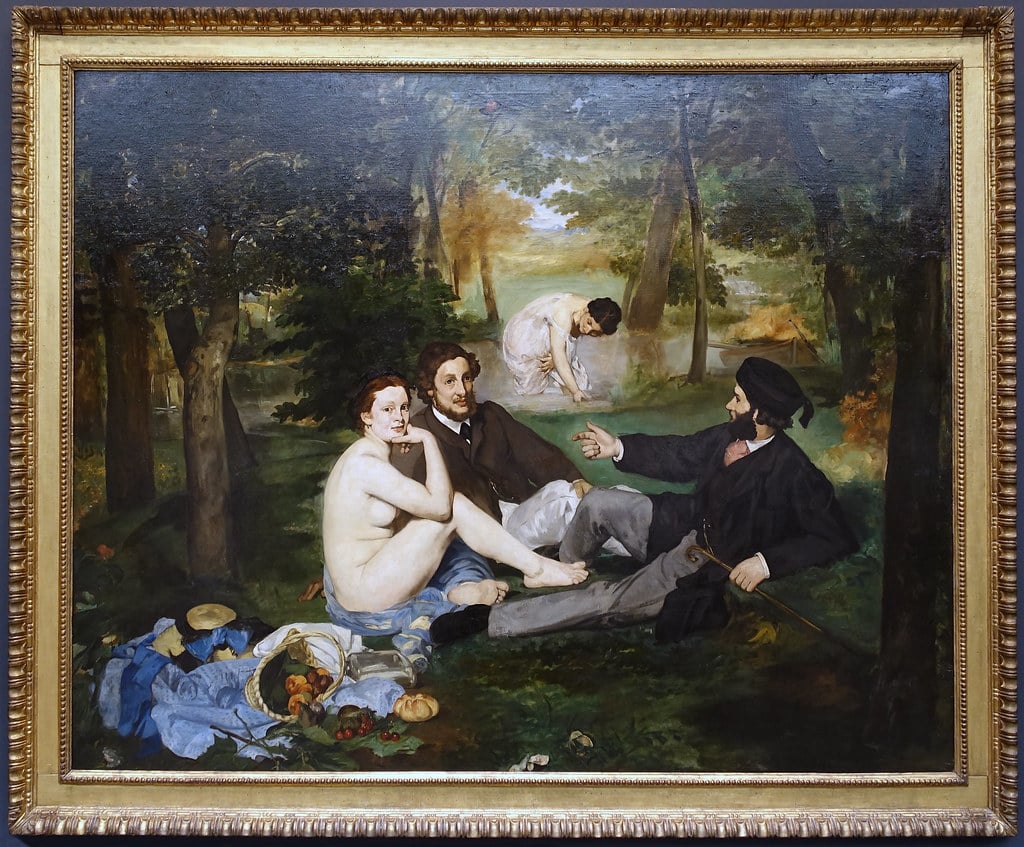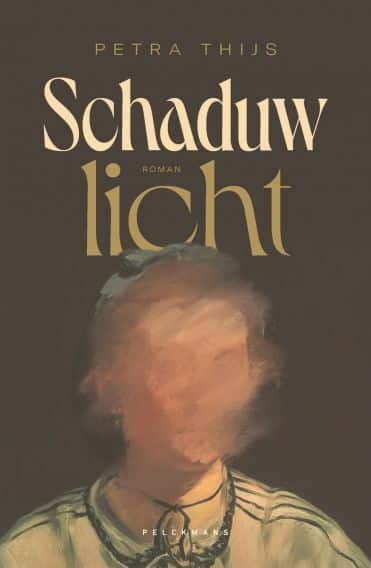‘Schaduwlicht’ by Petra Thijs: Ode to a Painter’s Model
In Schaduwlicht (Shadow light), Petra Thijs grants us a glimpse behind the scenes in the art world, with the remarkable life story of Victorine Meurent, the life model for Edouard Manet’s Le déjeuner sur l’herbe.
It really is setting the record straight, this debut novel by Petra Thijs (b. 1972) about Victorine Meurent, a young woman who, in the mid-nineteenth century, posed as a model for a number of the ground-breaking works of the painter Édouard Manet, and became one of his muses.
 Petra Thijs
Petra Thijs© Erik Van Grieken / VRT
Ground-breaking, because, moving away from tradition, Manet did not depict his nudes with averted gazes, but they looked straight into the eyes of the viewer.
Setting the record straight, because Meurent’s role and influence were much more important than first suggested. She was not only a model, but also a painter herself, at a time when women were not yet admitted to official salon exhibitions. And she certainly was not an alcoholic sex worker who died young, as she was wrongly portrayed by a dubious art critic in a limp biography.
Depraved diva
For that last image, of a depraved diva, we ‘thank’ Adolphe Tabarant, one of Manet’s biographers. Thijs begins her novel with the manuscript of a book that Tabarant wanted to write about Victorine Meurent himself. It is the story of a smug and bragging art critic who considers himself as important as the painters he frequents and reviews. Although Tabarant is not averse to gossip, his manuscript is stiff, dull even, it is mere magazine fodder by a jaded hack, with a jealous nature at that. So the reader has to endure this for a while, but it is a necessary introduction to understand what follows. And of course, it helps that you have already developed a dislike for this fake news peddler.
The real reading pleasure starts on page 63, when Thijs steps into the shoes of Victorine Meurent and tells her life story. That story is flamboyantly written, full of anecdotes and sharp observations of the (men’s) world around her, in a much richer language than Tabarant’s dry account.
At the age of fourteen, Victorine flees to the French capital, where she seeks salvation in artistic circles
We encounter Victorine as a young girl yearning for adventure in Paris, inspired by her artistic father, but also living under the yoke of a bossy, resentful mother. At the age of fourteen, Victorine flees to the French capital, where she seeks salvation in artistic circles. She drifts from lodging to lodging, working in hospitality and as a model, and eventually, she comes into contact with Édouard Manet.
Free-spirited woman
And so Thijs tells the story of a poor but free-spirited woman in a male-dominated world. Life is hard because women – especially models – are not taken seriously. It is her intelligence, much more than her physical appearance, that sets Victorine apart. She is offered lessons with the Belgian and French painters Alfred Stevens and Etienne Leroy, and in due course, she is exhibiting her work.
Manet goes along with Meurent for a long time, and he sees the paintings as resulting from their interaction
And Manet notices her, too. At first, he is struck by her red hair and seductive gaze, but equally, he discovers that Victorine has something to say, has a view on art, an opinion on the future of painting. She has a clear idea of how she wants to be portrayed in the paintings he makes using her as a model. Because in addition to Le déjeuner sur l’herbe, there is also L’Olympia and a few other lesser-known works. Meurent’s influence appears to be greater than previously thought. Manet goes along with her for a long time, and he sees the paintings as resulting from their interaction. But in the end, he also remains stuck in his role. Feminist men, that’s only later.
 Édouard Manet, Le déjeuner sur l’herbe
Édouard Manet, Le déjeuner sur l’herbe© Musée d’Orsay, Paris
Victorine is strong, but inevitably she is scarred by the many adversities and setbacks in her life. At times her story is a real pit of sorrow, and the little that gives her joy in life is often short-lived. It is to Thijs’s credit that the novel is not a tearjerker, but an ode to the strength of this woman, who steadfastly pursues her own path.
Research

Thijs relies heavily on history and the various sources she was able to find during her research. For ten years she was busy digging and writing. At the end, she provides historical clarification, and she is open about what is made up and what isn’t. This is unnecessary, but it does show which narrative and literary interventions Thijs used to bring to life the Parisian beau monde, with all the slander, sleaze and machismo that seemed to go with it.
This way she not only takes a look behind the scenes of that world, but she also affords us a glimpse into her own writing process. The fact that we didn’t once doubt the truthfulness of her partly made-up story while reading is an extra notch in the belt of this Flemish debut author.
Excerpt of ‘Schaduwlicht’, as translated by Elisabeth Salverda
It was yet another sleepless night that I spent next to her room. The hall was empty and the floor I sat on, freezing and unsettling. The concierge’s apartment on the ground floor seemed to be holding its breath. I did not even hear a baby murmur or an old woman cough, just my brain creaking from time to time as it kept spinning at full tilt. For a while I cried a little, because crying hurts less than thinking. At least until after this brief respite my brain raced onwards about how many accidents there were every day, that certain clocks stopped every minute, while other clocks just kept ticking and – perhaps what surprised me most – that new people were being born, without regard to who preceded them. That room was found for so many new people on this globe, while there was none left for some. I sighed. Perhaps elsewhere in this manic city called Paris there was someone who, like me, lay awake now, wondering how the earth kept turning. The bedroom door next to me opened. Mother came to see.
“How many times do I have to tell you? It is too cold to sit here barefoot on the floor at night. And you will not get your shoes back after that last time you ran away.”
I turned my back on her.
“Don’t think you’re the only one in this family who’s been through something. You are already twelve. Old enough to take responsibility.”
I didn’t respond.
“If you keep doing that, you might as well be dead as far as I’m concerned.”
I crossed my arms. From the bedroom behind her, I heard Father’s voice, “You can’t say that.”
Mother hesitated, I heard, as if she wanted to say something to put things back where they belonged in her world. But she changed her mind. “Then it’s up to her if she gets sick.” She shrugged and closed the bedroom door again. When I was certain she had gone, I peeked through the keyhole of the locked room, the room I had been guarding against Mother and the rest of the world for months now, with the bed and chair covered by white sheets, protected from light and dust. They were at once familiar and blank as an unwritten page.
Moments later, I went back to my room, grabbed my sketchpad, and tried again to sketch the person who had been my shadow for years. For a long time, I had only fleeting glimpses from the corners of my eyes, scribbles without character. Somehow, she was always one step ahead of me. Maybe it was because I had never really learned to draw. Or because the stubs of pencils I could get my hands on always ran out before I could capture her. Still, over the years, she took on a more physical presence.
Petra Thijs, Schaduwlicht, Pelckmans, Kalmthout, 2022, 376 pp.












